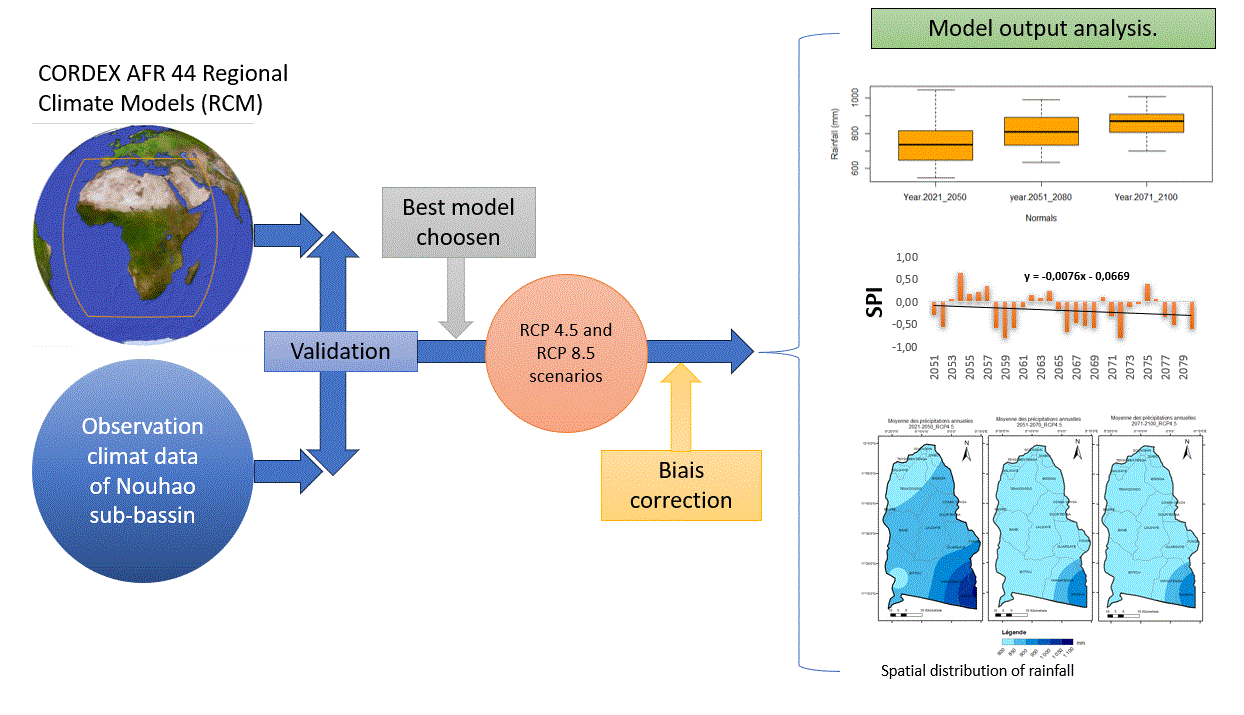
Climate change is an indicator of changes happening in the biosphere. Monitoring it, will anticipating actions against the resulting disasters. This study, undertaken in Burkina Faso Nouaho sub basin, gives an overview of rainfall in the near, medium and long terms. It is built on regional climates models which are climates projections from global climate models downscaling. These models are generated basis on scenarios like greenhouse gas emissions and radiative forcing called Regional Concentration Pathways (RCP). The two scenarios RCP 4.5 and RCP 8.5 chosen in this study, have enabled to identify a rainfall regional climate model whose output corrected basis on Nouhao sub-basin observation data, highlight changes in sub-basin future precipitation. Over the three defined normal, i.e. normal 1 (2021-2050), normal 2 (2051-2080) and normal 3 (2071-2100), cumulative annual rainfall mean shows a downward trend under the RCP 4.5 scenario, and an upward trend under the RCP 8.5 scenario. The Standardized Precipitation Index (SPI) for the RCP 4.5 scenario shows very wet years at the start of normal 1, before giving way to alternating years close to normal rainfall, in normal 2 and 3. In the RCP 8.5 scenario, the SPI shows a dominance of dry years in normal 1. In normal 2 and 3, wet and very wet years return to dominate. The spatial dynamics of future rainfall, meanwhile, show a latitudinal shift in annual rainfall totals towards the south-east of the sub-basin under the RCP 4.5 scenario, and towards the north-west under the RCP 8.5 scenario. The climate projection thus highlights possible future changes in precipitation in the sub-basin. Its consideration could form the basis for the implementation of climate change adaptation strategies in the area.
Total file downloads: 13